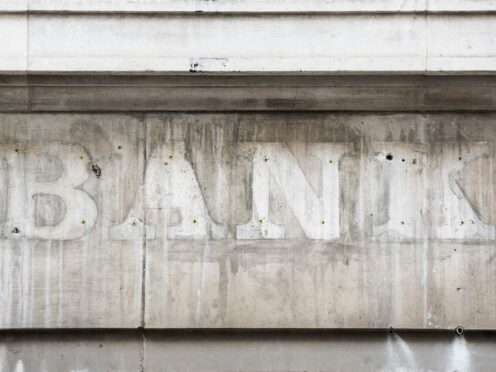
The number of UK bank branches to shut their doors in the past nine years passes 6,000 on Friday, according to Which?.
The consumer group said the milestone highlights the impact this “avalanche” of closures has had on high streets and the need to provide replacement services for millions of people who rely on them.
Which? said that eight Barclays branches were shutting their doors on Friday, taking the total by the end of the day on May 17 to 6,005.
This equated to over 60% of the bank branch network since Which? began tracking closures in 2015.
The eight Barclays closures relate to branches in Alperton in Wembley, London: Andover in Hampshire; Bangor in County Down, Northern Ireland; Bracknell in Berkshire; Hornchurch in Essex; Inverness in the Highlands in Scotland; Liverpool; and Streatham in London.
Barclays has closed 1,216 branches, according to Which?
NatWest Group, which comprises NatWest, Royal Bank of Scotland and Ulster Bank, has closed 1,360 branches and Lloyds Banking Group, made up of Lloyds Bank, Halifax and Bank of Scotland, has shut 1,146 sites, the consumer group said.
Which? said 200 closures by various banks are already scheduled for the rest of 2024.
Currently, 24 more bank branch closures have been scheduled for 2025, although more are expected to be announced later this year and next, it added.
While millions of consumers have made the switch to banking digitally, there remains a significant number of people who are not yet ready or willing to make that jump, underscoring the need for accessible alternatives, Which? said.
There are various initiatives to help plug gaps in the cash access network, as bank branches close.
The 50th banking hub was recently opened. Banking hubs allow banks to share facilities. They have a counter service operated by the Post Office, allowing customers to conduct routine banking transactions.
The Post Office also recently reported that cash transactions at its branches totalled a record £3.48 billion in April. The Post Office has an agreement with many banks, allowing their customers to carry out everyday banking over its counters.
With a general election looming, Which? said it believes that the next government should commit to delivering at least 200 shared banking hubs in the first two years following the election.
It added that as bank branch closures are likely to continue in the coming years, any target may need to be revised upwards to keep pace.
Sam Richardson, deputy editor of Which? Money, said: “This milestone of more than 6,000 bank branch closures in just nine years underscores the seismic shift that has taken place in terms of our banking habits and the character of the British high street.
“While some may hardly notice the closure of their local branch as they seamlessly switch to online banking, for others reliant on face-to-face services, the impact can be disastrous.
“It’s not about halting closures altogether, but ensuring that essential banking services remain accessible to those who still rely on them.”
A Barclays spokesperson said: “As visits to branches continue to fall, we need to adapt to provide the best service for all our customers.
“Where levels of demand don’t support a branch, we maintain an in-person presence though our Barclays Local network, live in over 350 locations, based in libraries, town halls, mobile vans and our banking pods.
“We also support access to cash with our cashback-without-purchase service, 24-hour deposit-taking ATMs and by working alongside the Post Office and Cash Access UK.”
A spokesperson for trade association UK Finance said: “An ever-increasing number of people are using telephone, mobile and internet banking and fewer people are visiting bank branches on a regular basis. Balancing this change in the way we bank means firms have to make difficult decisions about maintaining their branches.
“The industry has invested heavily in alternative services, including thousands of post offices where people can do a lot of their day-to-day banking.
“Alongside this, the industry is working to roll out shared banking hubs to bring together different firms to support their customers.
“There is also significant ongoing investment to ensure access to cash, including free ATMs and cashback without purchase. If you are concerned about your local bank branch closing, please contact them and they will help you find the best alternative for your needs.”
Stephen Noakes, retail director at Nationwide said: “Which? has helpfully put the spotlight on branches. Our research shows nearly three-quarters of consumers of all ages are concerned about the rate of closures, with half of 16 to 24 (year-olds) left frustrated after finding their local branch closed.
“Branches are valued for everyday banking but also for important moments like scam worries and transferring a large amount of money.
“That’s why we have promised that everywhere we have a branch today we will remain until at least 2028.”

Enjoy the convenience of having The Sunday Post delivered as a digital ePaper straight to your smartphone, tablet or computer.
Subscribe for only £5.49 a month and enjoy all the benefits of the printed paper as a digital replica.
Subscribe